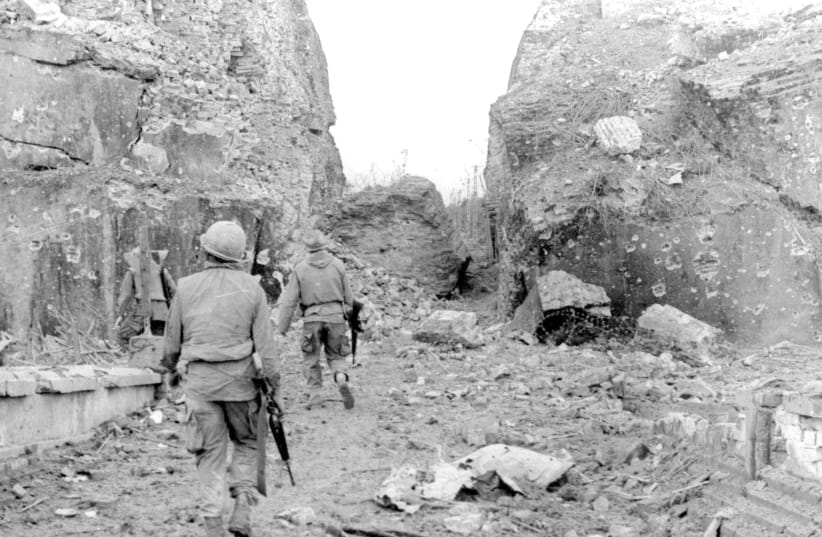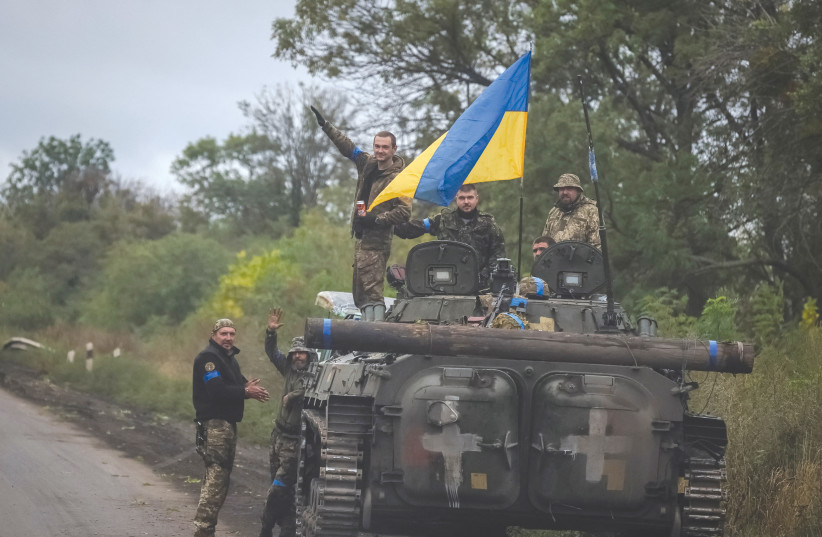“I think I know the American people,” said Ho Chi Minh while surprising a pair of American interviewers by suddenly abandoning the Vietnamese he spoke through an interpreter, and shifting to fluent English.
“I don’t understand how they [ordinary Americans] can support their involvement in this war,” he said, and asked: “Is the Statue of Liberty standing on her head?” (The New York Times, September 4, 1969)
The Vietnamese founding father – an erudite speaker of five tongues – was well positioned to ask this question, intellectually and morally, as a student of American history who admired George Washington as a freedom fighter who defeated a colonial power.
Ho and his struggle come to mind now, as the Ukraine War makes many wonder whether it is the Vietnam War all over again. Well, it isn’t – the two wars are different, and in some ways even inverted – but in their bottom lines they are one and the same.
UKRAINE IS different, first of all, physically, and not only because it’s twice the size of Vietnam.
A European flatland of bitterly frozen winters, the current war’s theatre is the opposite of the Asian jungles and mountains whose people endured three colonial occupations and one civil war.
Ukraine’s situation is also different historically. Unlike Vietnam’s occupiers, who came from afar, Ukraine’s are headquartered in Moscow, a 90-minute flight from Kyiv.
The Ukraine War is also different culturally. The Vietnamese had no previous acquaintance with their Japanese, French and American conquerors. Ukraine’s defenders and invaders are cousins who share the same Orthodox Christianity, understand each other’s Slavic tongue and write the same Cyrillic script.
The Ukraine War is even more different socially. Unlike heavily industrialized Ukraine, Vietnam was a society of small-scale farmers. That is why the two wars are also economically different. Wartime Vietnam played no role in the global economy, whereas Ukraine is a major producer of energy, metals and grain.
That is why the two wars are also very different militarily. The Vietnamese had nothing comparable to the Ukrainians’ missiles, cannons, aircraft, tanks, ships and training, the result of three decades of independence. The Vietnamese fought mainly with rifles, pistols, grenades and knives, and what aircraft, artillery and missiles they wielded were woefully inferior to what imperial industry wrought on them.
Even so, in terms of what matters most, Russia is repeating the Western powers’ mistakes in what the French called Indochina, and the Americans called Vietnam.
How Russia is making the same mistakes in Ukraine the US made in Vietnam
RUSSIA’S FIRST mistake lies in its leaders’ political reading, or rather misreading, of Ukraine when they decided to attack it.
Like the French and Japanese in their situations, the Kremlin thought it would manipulate a conquered people to submission through buyable leaders. In Indochina, it was Emperor Bao Dai, a hedonistic playboy whose leadership was no match to the charismatic and ascetic Ho Chi Minh, much the way the collaborators Moscow planned to install in Kyiv got lost in Volodymyr Zelensky’s shadow.
Russia’s second mistake lay in its military planning which, like the Americans’ in Vietnam, prepared for the type of conventional war that it excelled at. Yet the ones who decided the war’s character were the defenders, and their choice was a guerrilla war for which last century’s Americans, like this century’s Russians, were unequipped and untrained.
This is the first military mistake the Russians repeated, having been trapped by the guerrillas who lampooned thousands of their tanks, avoiding the conventional war’s confrontation of tank versus tank. This is besides the Russian failure to meet conventional war’s basic demands of large-scale maneuvering and long-distance logistics.
The second American mistake that the Russian military repeated happened last month, when the Ukrainians fooled the Russians to expect a counterattack’s main thrust in the southeast, around Kherson, only to wage it in the northeast, some 450 km. from there, where the unsuspecting Russians reportedly fled the battlefield in panic, leaving behind thousands of casualties.
This part of the current war brings to mind Vietnam’s Tet Offensive in the winter of 1968.
True, that move, unlike the Ukrainian counterattack, failed in its main aim – to spark a popular revolt against the US. However, the Viet Cong stunned the Americans by striking simultaneously in a hundred localities across South Vietnam, thus displaying presence, reach and coordination they were not known to possess. Even more importantly, the offensive pulled the war into the hinterland’s jungles and mountains, where the American infantry would prove woefully vulnerable.
Most crucially, the Tet Offensive made pro-war Americans suddenly realize the enemy’s resourcefulness and resolve, and thus question the efficiency of America’s war management. That is exactly what the Ukrainian counteroffensive has caused in recent weeks among pro-war Russians.
Now, in its response to the enemy’s initial successes, Russia is repeating the Johnson administration’s answer to North Vietnam’s fighting spirit, which was to balloon America’s expeditionary force, from fewer than 20,000 troops in 1963 to 184,000 in 1965 and more than half-a-million by 1968.
It was the imperial reflex at its finest, a display of maximum quantity and minimum imagination. It did nothing to quell the enemy’s spirit, and much to fan draft evasion by better-off Americans (like Donald Trump) who left the fighting to the undereducated and poor.
That, too, is happening now in Russia, both in its leaders’ decision to enlist 300,000 more troops, and in the people’s response to this decree, which is to run for Russia’s exits, much the way Americans fled to Canada.
The people, it now turns out, have no enthusiasm for the war that is in the process of becoming the business of the politicians who will continue to bask in its fire, and the poor who will die in its flames.
www.MiddleIsrael.net
The writer, a Hartman Institute fellow, is the author of the bestselling Mitzad Ha’ivelet Ha’yehudi (The Jewish March of Folly, Yediot Sefarim, 2019), a revisionist history of the Jewish people’s political leadership.

